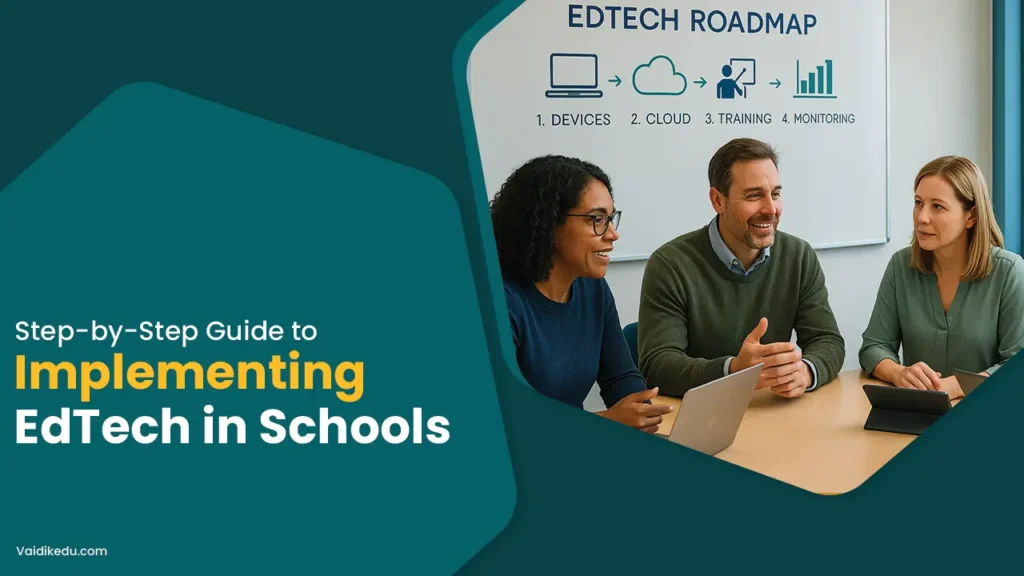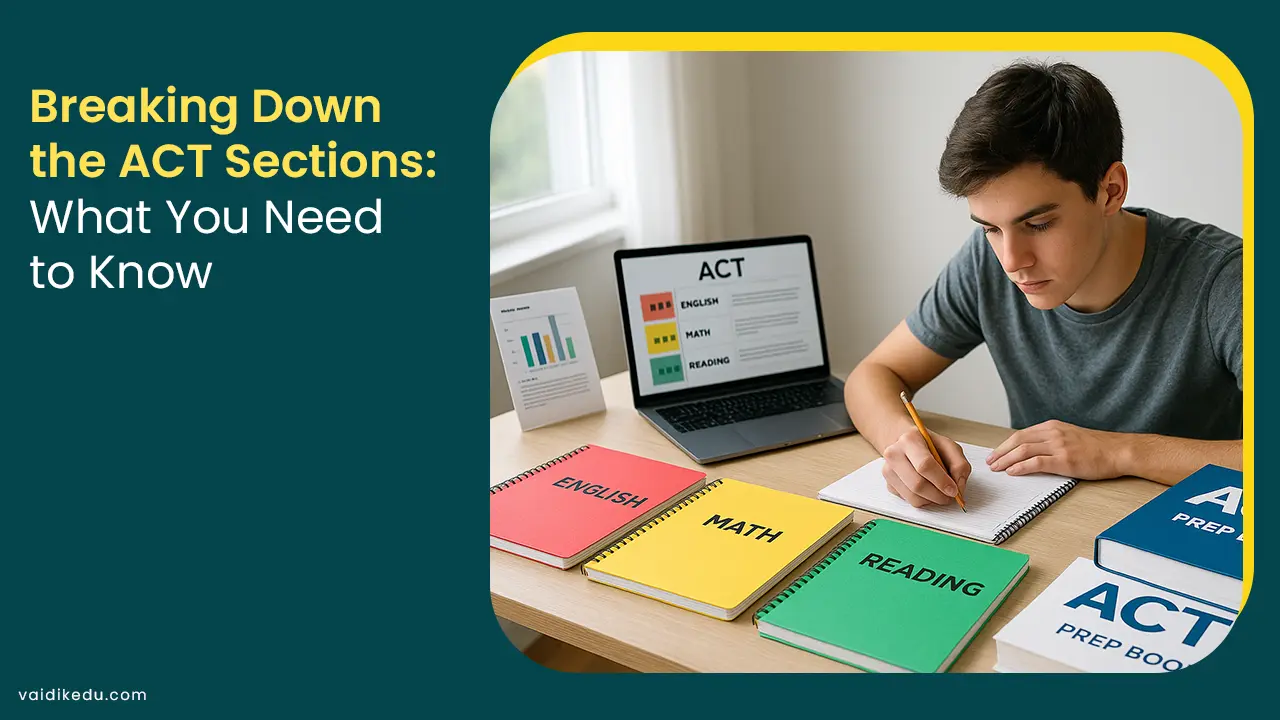In today’s fast-paced world, technology has transformed the educational scene. EdTech (Educational Technology) promises to improve teaching and learning by incorporating individualized learning tools and collaborative platforms.
However, integrating EdTech into a school’s ecosystem is not as simple as flipping a switch; it requires a well-thought-out strategy, commitment from stakeholders, and adaptability to meet the needs of students and educators alike.
Smart boards, AI-powered tutoring systems, and the implementation of a learning management system (LMS) can all help to improve classrooms through EdTech integration. In contrast, poor planning or a lack of clarity can result in wasted resources, uninterested kids, and dissatisfied teachers.
This blog will lead you through the steps to successfully integrating EdTech in classrooms. This road map can help schools make a smooth transition to technology-enhanced learning while guaranteeing meaningful outcomes for all parties involved.
Why is EdTech Implementation Important?
Before commencing the implementation process, it is necessary to understand the “why” of EdTech adoption:
- Increasing Student Engagement: Interactive technologies like gamified learning platforms and augmented reality can make lessons more engaging and relevant.
- Personalized Learning: Adaptive learning software can fit students’ specific needs, allowing them to learn at their own pace.
- Teachers gain from EdTech because it automates tedious tasks such as grading and attendance, allowing them to focus on instruction and mentoring.
- Educational Equity: Technology has the potential to bridge access gaps, providing equal learning opportunities regardless of geography or socioeconomic status.
With these benefits in mind, let’s move to the step-by-step process for successful EdTech implementation:
Step 1: Define your goals
Before deploying any technology, schools must set specific goals for EdTech integration. What do you want to accomplish with EdTech? Do you want to increase student engagement, streamline administrative duties, or provide tailored learning experiences? Defining these objectives will help you make decisions during the implementation phase.
Include all stakeholders teachers, kids, parents, and administrators in the goal-setting process. Their feedback will assist ensure that the chosen tools suit the needs of all parties involved and encourage a sense of ownership in the integration process.
Step 2: Evaluate Current Resources And needs
The following step is to assess the school’s current resources, facilities, and technological readiness. Conduct an audit to evaluate:
- The availability of hardware, including laptops, iPads, and interactive whiteboards.
- The quality and dependability of the internet connection.
- The current state of digital literacy among teachers and students.
- Identify any holes that must be addressed. For example, if your school does not provide enough gadgets for students, you may need to invest in new gear. If teachers need training to use new tools effectively, schedule professional development seminars.
Step 3: Research And Choose The Right EdTech Tools
After you’ve set your goals and needs, look into EdTech tools that are relevant to your objectives. Consider the following factors:
- Usability: Can teachers and students use the program easily?
- Scalability: Can the tool support future growth and change?
- Customization: Does it have options that cater to diverse learning styles and needs?
- Integration: Can it work seamlessly with existing systems such as Learning Management Systems (LMS)?
Test a few tools before committing to a complete launch. Encourage teachers and students to try them and give feedback. Platforms such as Google Classroom, Khan Academy, and Seesaw are popular due to their variety and usability.
Step 4: Create A Detailed Implementation Plan
A well-structured plan is required for a successful EdTech implementation. Develop a timeframe, responsibilities, and budget for the integration process. Divide the plan into phases, like this:
- Preparation involves acquiring tools, improving infrastructure, and providing early training.
- Pilot Testing: Introducing EdTech in a few classes to detect potential issues.
- Full deployment: Implementing the tools throughout the school, with continuing assistance and evaluation.
Set realistic timetables and provide resources for each phase. Make sure the plan is adaptable enough to handle unexpected obstacles.
Step 5: Train Teachers And Staff
Teacher training is essential for successful EdTech deployment. Offer professional development sessions that focus on:
- Understanding the tools and their capabilities.
- Including technology in lesson preparations.
- Managing classroom dynamics in a technologically-driven setting.
Provide continuing assistance via workshops, online resources, and peer mentoring initiatives. Teachers that are confident in utilizing EdTech are more likely to embrace it and effectively integrate it into their instruction.
Step 6: Ensure Accessibility And inclusivity
EdTech should be available to all students, regardless of financial status or educational needs. To address potential impediments:
- Providing devices to pupils who don’t have access to technology at home.
- Choosing tools with accessibility capabilities, such as screen readers or multilingual support.
- Providing alternate resources to pupils with special needs.
Inclusiveness guarantees that EdTech helps all students and promotes a more equal learning environment.
Step 7: Track And Evaluate Progress
Once the EdTech tools are in place, continue to monitor their impact on teaching and learning. Collect comments from teachers, students, and parents to determine areas for improvement. To measure success, look at criteria like student involvement, academic performance, and teacher satisfaction.
Regular reviews can help you fine-tune your approach and adjust to shifting needs. Consider forming a committee or task force to monitor the ongoing use of EdTech and offer upgrades or changes.
Step 8: Foster An Innovative Culture
To prosper with EdTech integration, schools must cultivate an innovative culture. Encourage instructors to try out new technologies and share excellent practices with colleagues. Recognize and celebrate accomplishments to boost excitement and motivation.
Create opportunities for students to participate actively in the process, such as through tech clubs or assisting their peers with problem solving. A collaborative and forward-thinking environment will ensure EdTech’s long-term success at your institution.
Conclusion
Implementing EdTech in schools is a revolutionary process that involves meticulous preparation, teamwork, and dedication. Following this step-by-step guidance will help schools manage the hurdles of integration and realize the full potential of technology in education.
Remember that the purpose of EdTech is not to replace traditional teaching techniques, but to improve them. When implemented properly, technology can empower teachers, engage students, and foster a dynamic and inclusive learning environment. With the correct approach, EdTech may pave the path for a more promising future for education.
Frequently Asked Questions
Educational technology (EdTech) is the use of digital tools and resources to improve teaching and learning processes.
Conduct a readiness assessment to assess your school’s infrastructure, IT resources, and employee digital literacy.
Provide extensive training, ongoing support, and chances for cooperation to help teachers gain confidence and proficiency.









